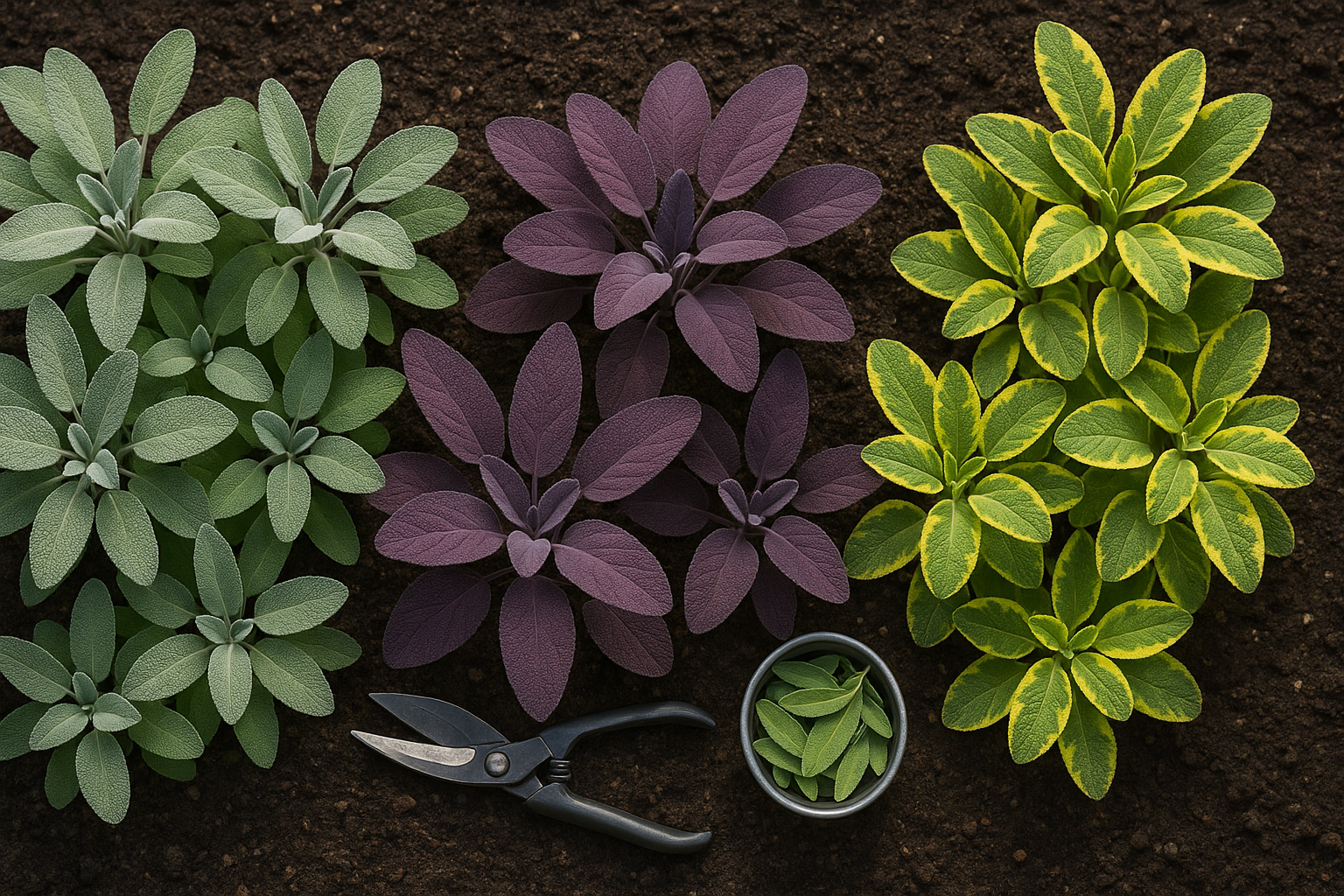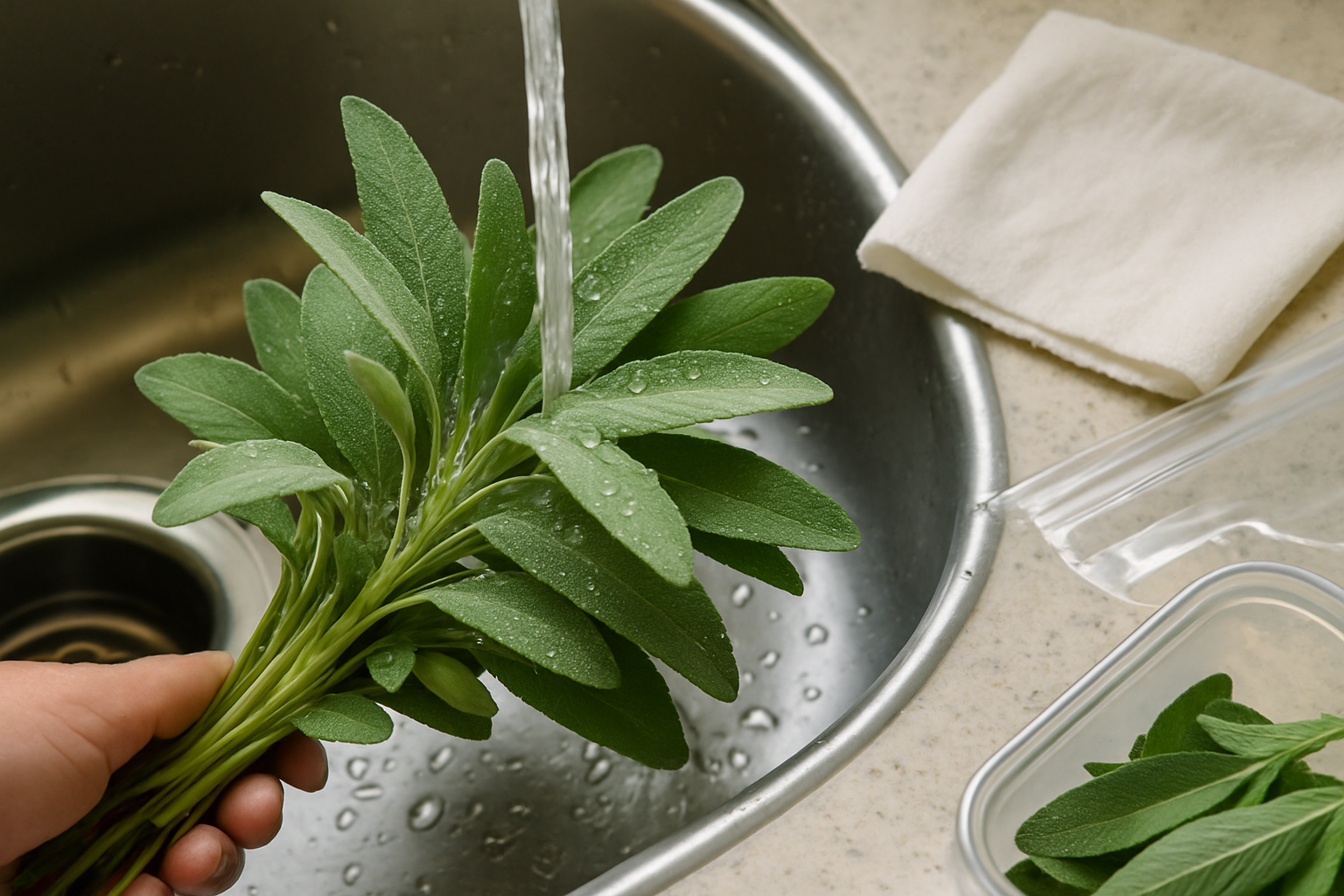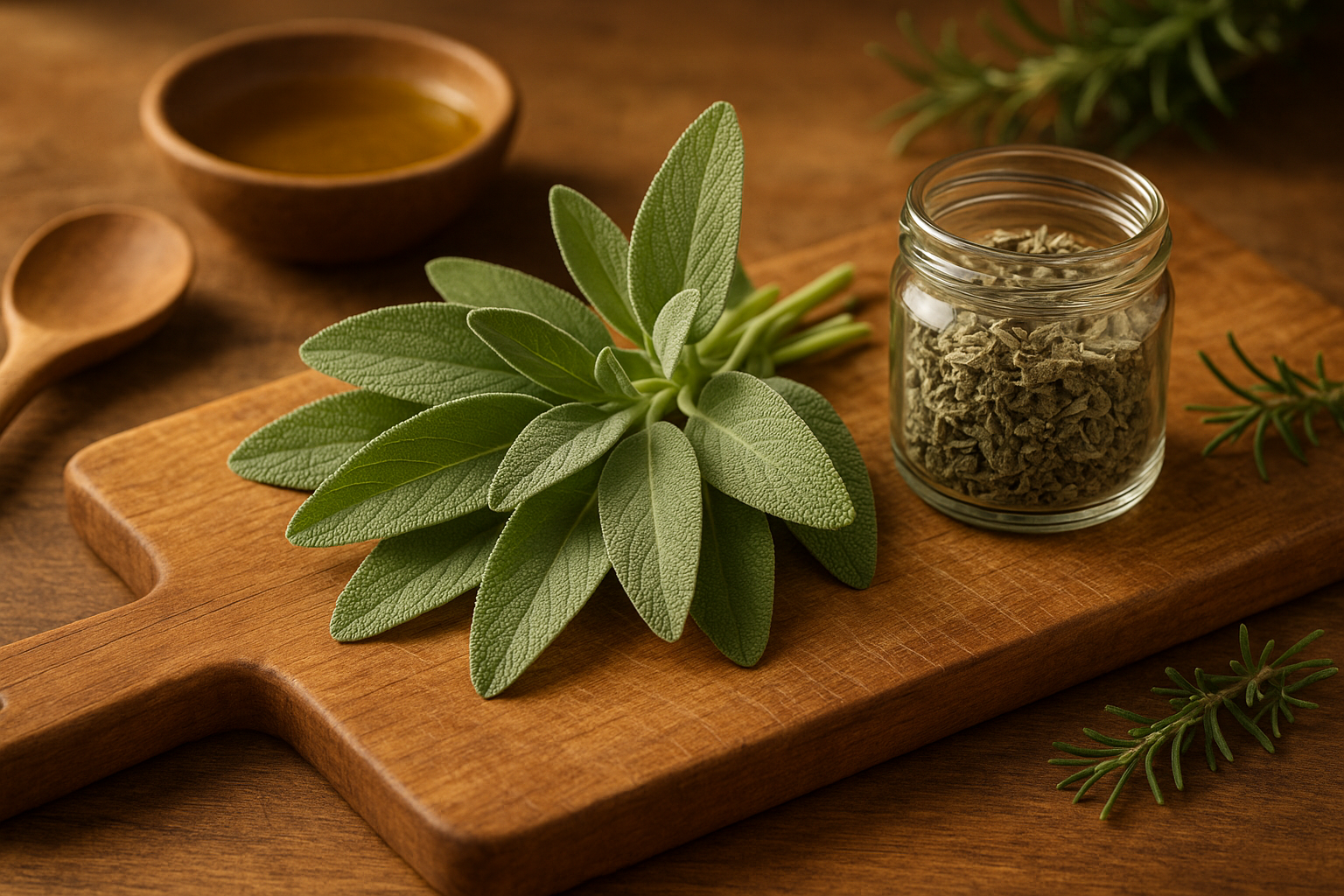Introduction
Cooking with sage has been a cherished tradition in kitchens around the world, thanks to this herb’s earthy aroma and versatile flavor profile. But when your recipe calls for sage, should you reach for fresh leaves or that handy jar of dried sage in your pantry? It’s a common dilemma for home cooks and food lovers alike.
In this post, you’ll discover the key differences between cooking with fresh vs. dried sage, from how their flavors shine in different dishes to which form works best in stuffing, soups, or roasted meats. We’ll break down the best ways to prepare and store both types, with simple tips for substituting one for the other.
If you’ve ever wondered how to get the most flavor from sage—whether you’re seasoning holiday turkey or adding depth to a weeknight pasta—this guide will help you choose the right form every time.
What is Sage?

Sage is a perennial herb native to the Mediterranean, where it has thrived for thousands of years. Known botanically as Salvia officinalis, sage is celebrated in both ancient and modern kitchens for its robust, slightly peppery flavor with earthy and piney undertones. Its aroma is uniquely savory and warm, often described as reminiscent of eucalyptus and citrus, making it a favorite for hearty dishes like roasted meats, stuffing, and savory breads.
Among the many varieties, common garden sage, purple sage, and golden sage are the most popular in cooking, each offering subtle differences in color and flavor intensity.
Beyond cooking, sage is surprisingly nutritious—it’s a good source of vitamin K and contains trace amounts of vitamins A, C, along with several minerals. Traditionally, sage was prized for its medicinal properties, such as aiding digestion, soothing sore throats, and supporting memory. Recent research suggests that sage contains antioxidants and anti-inflammatory compounds, which may provide health benefits when included as part of a balanced diet.
For the best flavor and nutrition, add fresh sage leaves toward the end of cooking or use dried sage sparingly, as its concentrated flavor can easily overpower a dish.
Fresh Sage

Fresh sage features soft, velvety leaves with a silvery-green hue, instantly recognizable by their slightly fuzzy texture and earthy aroma—a blend of piney and peppery notes with hints of citrus and eucalyptus. When selecting fresh sage, look for firm, deeply colored leaves free of yellowing or dark spots, as these signs indicate the herb is past its prime.
Rinse sage leaves gently under cool water just before using, then pat them dry to preserve their flavor and texture. To store fresh sage, wrap the stems loosely in a damp paper towel and place them inside an open plastic bag in the fridge; this keeps the leaves vibrant for up to a week.
Fresh sage shines in dishes where its robust flavor can stand out, such as roasted poultry, pork, or hearty autumn vegetables like squash and sweet potatoes. For a simple way to release its aroma, try frying whole leaves in a bit of butter until crisp—these make an attractive and tasty garnish for soups and pasta.
Be careful not to overpower delicate recipes with too much sage; its strong flavor is best balanced with other herbs or used in small amounts, especially in creamy sauces, stuffings, or bread. If you’re new to cooking with fresh sage, start with classics like brown butter and sage sauce for gnocchi, or add minced sage to roasted chicken for a savory upgrade.
With its aromatic presence and versatile uses, fresh sage brings warmth and depth to everyday meals and special occasions alike.
Dried Sage
Dried sage is a kitchen staple prized for its concentrated, earthy aroma and robust flavor, which differs subtly from fresh sage. The drying process—typically air drying or using a low-temperature oven—removes moisture from the leaves, intensifying their natural oils and making the flavor more pronounced but slightly less vibrant than fresh.
This transformation brings a warm, savory quality to dried sage, with hints of pepper and eucalyptus, making it perfect for hearty dishes. To fully benefit from dried sage, proper storage is crucial. Keep your dried sage in an airtight container, away from heat, light, and moisture; a dark pantry or cupboard is ideal. When stored correctly, dried sage retains its potency for up to a year.
In the kitchen, dried sage shines in stuffing, stews, roasted meats, and vegetable dishes. It’s especially popular in holiday classics like Thanksgiving stuffing and sausage dishes, where its potent flavor stands up to longer cooking times and rich ingredients. For best results, add dried sage early in the cooking process to allow its flavors to infuse the dish. Try sprinkling a bit into soup or blending it with breadcrumbs for a savory crust on pork or chicken.
Because dried sage is more concentrated, use it sparingly—about one-third the amount you’d use for fresh sage—to avoid overpowering your meal. With its long shelf life and versatility, dried sage is an easy way to add depth and warmth to your everyday meals.
Fresh vs Dried Sage
When swapping fresh and dried sage in your recipes, it’s important to keep the right conversion in mind: dried sage is much more concentrated, so you’ll usually need just one-third the amount. For example, if a recipe calls for 1 tablespoon of fresh sage, use only 1 teaspoon of dried.
The reason comes down to moisture—fresh sage leaves are full of water, which makes their flavor milder and more delicate. In contrast, the drying process removes moisture and intensifies the herbal punch. Dried sage is earthy, slightly bitter, and more robust, making it perfect for long-cooked dishes like stews, roasts, and stuffings, where its stronger essence can fully infuse the meal.
Fresh sage, with its vibrant, slightly peppery taste and aroma, shines in quick sautés, garnishes, compound butters, or any dish where you want a pop of herbal brightness.
If you’re substituting one for the other, add dried sage early in the cooking process to let it blend with other flavors and avoid an overpowering aftertaste. Meanwhile, add fresh sage closer to the end to preserve its fresh flavor and delicate texture.
As a tip, if your dried sage has been open for a long time and smells dull, add a pinch more—but always taste as you go. And if you’re out of both, try swapping in marjoram or thyme, which share similar earthy notes.
A little attention to quantity and timing will ensure sage—fresh or dried—complements your dish just right.
Top Dishes to Try With Sage
Sage is a versatile herb that can elevate both classic and modern dishes with its earthy, slightly peppery flavor. In traditional cooking, roast chicken or turkey with sage-infused butter under the skin is a holiday favorite, while stuffing seasoned with dried sage delivers a nostalgic punch.
Sage is also essential in Italian cuisine—think brown butter and sage poured over pillowy gnocchi or butternut squash ravioli. For a modern twist, try crisping fresh sage leaves in a bit of olive oil and using them to garnish creamy soups, roasted vegetables, or even pizzas.
Incorporate chopped fresh sage into breads or homemade sausage for an aromatic boost, or toss dried sage into bean stews and casseroles, where its flavor can meld with heartier ingredients.
To maximize sage’s flavor, always add dried sage early in the cooking process so it has time to soften and release its oils, but save fresh sage for the last few minutes to preserve its vibrant taste.
Don’t hesitate to experiment:
- Sprinkle finely chopped fresh sage into scrambled eggs.
- Use a pinch of dried sage in marinades and salad dressings to discover new favorite combinations.
Both forms of sage offer unique tastes—let your creativity guide you.
Tips and Tricks for Getting the Best Sage Flavor
To get the best sage flavor, start by knowing when to add it—fresh sage should go in near the end of cooking to preserve its vibrant taste, while dried sage can be added earlier to let its earthy flavors develop. Always chop sage leaves finely to avoid tough bits and release more aroma.
Remember, a little goes a long way: sage’s strong, savory profile can easily overpower dishes, so add it gradually and taste as you go. Avoid burning sage, especially when sautéing, as it turns bitter quickly; instead, cook it gently in a bit of oil or butter until just fragrant.
If you’re new to sage, try both fresh and dried forms—fresh sage is great for garnishing roasted vegetables or flavoring poultry, while dried sage enhances stews and stuffings. Don’t let sage’s boldness intimidate you—experiment in small amounts and discover how it can transform your favorite recipes.
Conclusion
Whether you choose fresh or dried sage, both have their place in the kitchen, adding earthy, aromatic depth to dishes ranging from roasted meats to savory stuffing. Fresh sage delivers a vibrant, bold flavor, while dried sage offers convenience and a more concentrated taste—perfect for soups and sauces.
Don’t hesitate to experiment: try swapping one for the other, or use both together to layer flavors. Trust your instincts when seasoning, and enjoy discovering what works best in your favorite recipes. Start small, taste as you go, and let sage elevate your cooking—one delicious meal at a time.
